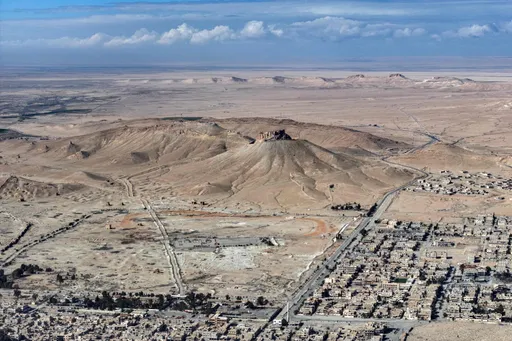SpaceX successfully launched astronauts from NASA last week, an event which drew global attention given its timing during the intense and sometimes repetitive news cycle that has been dominated by civil unrest in the US and the ongoing coronavirus pandemic.
The launch resonated with the people of Turkey, too. It reminded many Turks of Bandirma Rocket Club and a time sixty years ago, when their country was among the top three to initiate private space exploration missions.
Two years after the world's first artificial satellite Sputnik went into space in 1959, a group of high-school students in the Turkish city of Bandirma, founded a rocket club. The founding members Gungor Gezer, Artug Sayiner, Osman Caran, Atilla Yedikardesler and Adnan Zambak, all studied at Sehit Mehmet Gonenc High School.
Soon after their high school graduation, the club came under the media spotlight as it made its first attempt to launch a rocket. This was October 1959. The machine was 1m tall and weighed 3kg. But after covering a 40m distance, it crashed to the ground. The club members weren't disheartened, however. A few weeks later, they gave it another try, although this failed, too. As a result, the Bandirma Rocket Club was soon greeted with derision, mock and ridicule.
The club members were determined to move ahead. In 1960, in their third attempt, they successfully launched their 10cm calibred, 1.5m long rocket - it covered a distance of 750m. The event once again attracted the media spotlight with many magazines, journals and newspapers lauding their milestone, however limited it was. Even science writers, some from around the world, in the US and Italy, praised their attempts.
With renewed self-confidence, they renamed their club, ‘Bandirma Aviation and Astronomy Rocket Club’. Many experts in rocket science as well as academics joined it. Kirkor Divarci, a renowned Turkish academician, was among them. Divarci had a dream of designing and launching his own rocket. He formally joined the club along with his fiancé and donated $85 (400 Turkish Liras) to it. They had saved this money for their wedding ceremony.
Kirkor's rocket-building project received a financial and technical boost from the Istanbul Technical University and the Turkish Armed Forces, which then paved the way for Kirkor's dream rocket Marmara-1. He launched it on 30 August 1962, Turkey’s victory day.
With much fanfare, Kirkor in association with his club members, Turkish army and academicians of the Istanbul Technical University, launched Marmara-1 with the Turkish flag painted across it. The rocket flew through the sky, reaching 920m despite having some technical issues during take off. It became the first rocket launch on Turkish soil.
Kirkor was indefatigable. Just four days later, he sent Marmara-2 into the sky, covering a distance of 15km. At the same time, with this attempt, the team became the world’s number three after the US and Germany.
Under Kirkor's watch, the club launched at least one rocket per week. Hurriyet-1 and Hurriyet-2 followed Marmara-2. But it was the failing of Marmara-3 that disrupted their pace and put them under a brief spell of self-doubt and disappointment.
They bounced back with the launch of Marmara-4 which reached a height of more than 5km in the sky. The team earned accolades from Turkey's prominent air commander, Colonel Halim Mentes.
Kirkos and his colleagues produced a mix of several rockets, including Sirius, Vega, Aktrus, Ata-1 and Flying Turk. The most exciting one amongst them was Aktrus, which weighed 500kg and was 4m tall. Their aim was to place a rodent or any light animal into a capsule attached with the rocket. The plan would be that after reaching 150km, the capsule should detach from the rocket and parachute down to the earth with the animal in it.
Another machine, Vega, was as impressive as the Aktrus. Weighing 300kg and 3.6m tall, it was designed to reach 410km.
Something unusual then happened to the group. All the support they had received in the past few years began to wane and eventually disappear. Some say they fell victim to the intense political climate of the 1960s, which was marked by a dark military coup, while others accused them of being a tool for American propaganda as they exhibited US-made X-35 jets in their journal.
Artug Sayginer, head of the club, was quick to respond refuting all the allegations and maintaining that their aim was to inspire Turkish people to take the country's rocket science mission to the next level.
Amidst criticism and slander, Kirkor's house was caught in a deadly and mysterious fire. All the project files, records and written documents were burnt to ashes.
Call it exhaustion or disillusionment, Kirkor soon abandoned the club, ending his research in rocket science. The team soon fell apart, with their memory only remaining preserved in newspaper and magazine clippings.
























